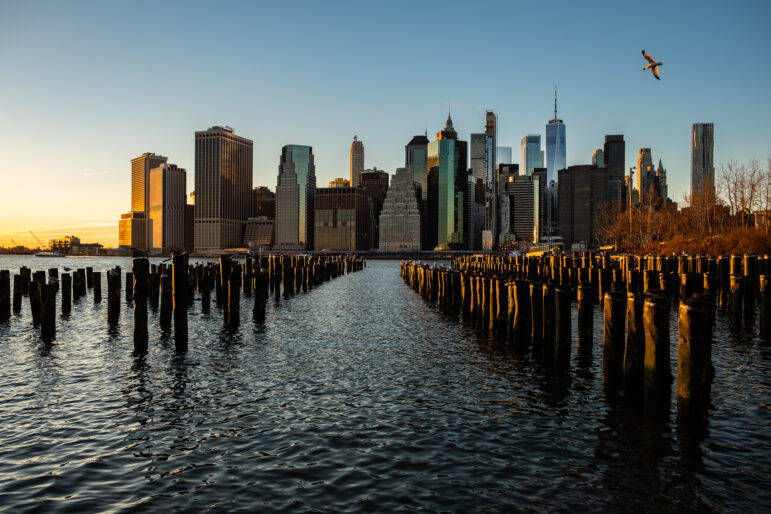The final rules for Local Law 97 give property owners until 2026 to avoid penalties, as long as they demonstrate “good faith efforts” to decarbonize their buildings—an extension that’s rankled some environmental groups, who say the threat of climate change demands more urgent action.

New York City’s Department of Buildings (DOB) finalized its second batch of rules Monday for Local Law 97—the city’s landmark climate law to curb greenhouse gases produced by large buildings—which goes into effect Jan. 1.
Under the law, owners of properties larger than 25,000 square feet are required to reduce their pollution outputs to meet new limits starting in 2024, and another set of stricter requirements in 2030, or face fines. The legislation is key to meeting the city’s climate goals, since the building sector accounts for around 70 percent of New York’s greenhouse gas emissions.
But the law has proven controversial: some building owners, including residential co-ops in the outer boroughs, say the energy upgrades needed for their properties to comply with the new limits are too costly. And some environmental groups, on the other hand, say the rules finalized this week are too lax.
They take issue with the timeline for compliance: while the law technically goes into effect in 2024, building owners can avoid penalties until 2026 if they demonstrate “good faith efforts” to reduce their outputs. This would include submitting a “decarbonization plan” to the city by May 2025, outlining their efforts to meet both the first set of limits and the more stringent standards going into effect in 2030.
Critics also slammed the rules for not setting stricter limits on Renewable Energy Credits—certificates which represent one megawatt-hour of renewable energy delivered to New York’s electricity grid—which property owners can purchase as a way to deduct from their site’s emissions total.
While the finalized rules prohibit owners who submit a decarbonization plan to delay penalties from purchasing the RECs, environmentalists say the credits could allow others to “buy” their way into compliance without making any actual efficiency upgrades to their property, as the law intended.
“Under Mayor Adams’ rules for real estate, owners of New York City’s most polluting buildings will opt to delay or entirely avoid pollution reductions, leaving New Yorkers breathing more pollution, losing good jobs, and paying higher utility bills,” green groups Food & Water Watch, New York Communities for Change, NYPIRG and TREEage said in a joint statement Monday night.
The organizations pointed to the success in compliance so far as evidence that the rule’s carve outs are unnecessary: 89 percent of buildings expected to be impacted by the law were on track to meet the 2024 emissions limits as of this fall, officials previously said.
But others lauded the final set of rules as striking a successful balance between meeting the goals of the law while providing property owners—who face fines of $268 for every emissions ton above their building’s limit—with flexibility. “This is one more important step to make our world-leading climate law practical, implementable and real,” said John Mandyck, CEO of Urban Green Council, said in a statement.
He pointed to another new element of the regulations which offers a “Beneficial Electrification credit” to property owners who replace their fossil fuel heating, cooling and hot water systems with electric energy as an incentive to make the switch. “The new rules provide clarity with incentives to accelerate carbon savings,” Mandyck said.
At a press briefing Tuesday, Deputy Mayor for Operations Meera Joshi defended the “decarbonization plan” option for owners who don’t meet the law’s requirements by 2024, saying the key is getting people prepared for the stricter 2030 emissions limits.
“It costs money, and we have a very diverse group of building owners,” she said. “If they’re making good faith efforts to get to their goals, some grace period is absolutely in line with compliance.”*
You can read the full batch of rules below.
To reach the reporter behind this story, contact Jeanmarie@citylimits.flywheelstaging.com.
*This story was updated after initial publication to include comment from the Adams administration.








